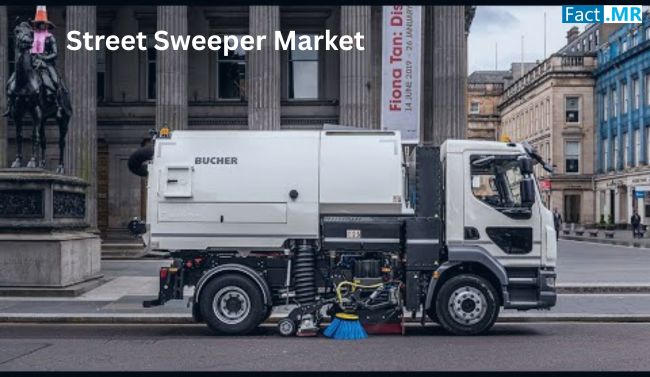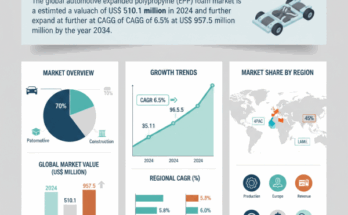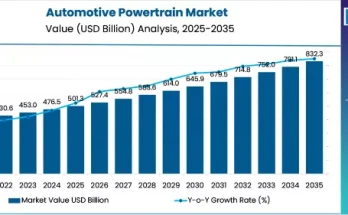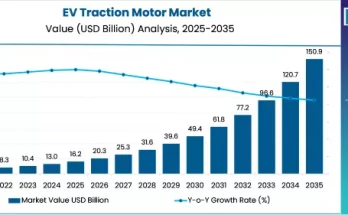Fact.MR, a leading global provider of market research and consulting services, has unveiled its latest industry report on the global Street Sweeper Market, revealing critical trends, key drivers, and growth prospects across regions. As urbanization accelerates and cleanliness becomes a public priority, the market for street sweepers is expanding rapidly, fueled by municipal investments, smart city programs, and an increased focus on sustainable public health solutions.
The report provides a comprehensive outlook on the market’s future, with insights into evolving technology, environmental regulation, and shifts in consumer and civic behavior. With governments and private contractors increasingly favoring low-emission and high-efficiency cleaning equipment, street sweepers are no longer just city maintenance tools—they’re key contributors to cleaner, safer, and more livable urban environments.
Market Insights:
As modern cities grapple with challenges such as air pollution, population density, and waste buildup, street sweeping has emerged as a core component of urban sanitation strategies. Street sweepers play a pivotal role in reducing particulate matter, removing hazardous debris, and preventing stormwater pollution—contributing to healthier ecosystems and public wellbeing.
Transition to Sustainable Mobility:
A significant market trend is the transition toward battery-electric and hybrid street sweepers, driven by clean air regulations and carbon neutrality targets. Traditional diesel-powered sweepers, while effective, are being phased out in favor of quieter, cleaner, and more energy-efficient alternatives. Municipalities are deploying electric sweepers to lower their carbon footprint and improve operational efficiency, especially in noise-sensitive or high-traffic urban zones.
Integration of Advanced Technologies:
The market is also experiencing a technological revolution. Autonomous street sweepers, integrated with GPS, IoT sensors, and AI-powered navigation, are entering the market. These machines can perform pre-programmed sweeping routes, self-correct in real-time, and monitor debris levels, battery usage, and maintenance needs remotely. Such smart systems offer significant cost savings, operational consistency, and performance transparency.
Customization and Versatility:
There is also rising demand for modular and customizable sweepers. From ride-on models for narrow city lanes to large truck-mounted sweepers for highways and industrial parks, manufacturers are developing specialized products tailored to different terrains and waste volumes. Features such as high-dump hoppers, dust suppression systems, regenerative airflow, and articulated steering are being integrated to meet diverse operational needs.
Growth in Public-Private Partnerships (PPPs):
Another notable development is the rise in PPPs for street cleaning operations. Many cities are outsourcing sweeping services to private contractors who invest in advanced equipment and maintenance capabilities. This shift is creating new opportunities for OEMs and service providers alike.
Key Statistics & Forecasts:
- The global street sweeper market is expected to continue growing steadily throughout the forecast period, driven by increasing urban infrastructure investment and a shift toward sustainable sanitation practices.
- Electric and hybrid street sweepers are projected to be the fastest-growing segment, fueled by regulatory incentives and green procurement policies.
- The vacuum sweeper segment holds a dominant share due to its efficiency in collecting fine dust and debris, making it ideal for urban use.
- Compact, maneuverable sweepers are seeing high demand in older cities with narrow streets and dense populations.
- Regional market growth is being led by Asia-Pacific, followed by North America and Europe, with countries such as China, India, Germany, and the U.S. at the forefront of adoption.
Challenges and Opportunities:
Despite strong growth prospects, the market faces several challenges. High upfront costs of electric or autonomous sweepers can deter smaller municipalities from immediate adoption. Additionally, a lack of charging infrastructure and trained personnel may slow the transition to electric models in certain regions.
However, these challenges are also creating opportunities:
- Leasing models and equipment-as-a-service (EaaS) are gaining traction, enabling cities to access modern sweepers without large capital investments.
- Innovation in battery technology—such as longer life cycles, faster charging, and greater energy density—is expected to reduce operating costs and increase adoption.
- Government grants and funding programs aimed at urban sustainability are helping offset procurement costs, particularly in Europe and North America.
Industry Applications:
The street sweeper market serves a broad spectrum of users and industries, with applications extending far beyond public road cleaning:
- Municipalities & City Governments: These remain the largest users, employing sweepers for daily cleaning of urban roads, walkways, parks, and public spaces.
- Airports & Seaports: Maintaining cleanliness on runways, taxiways, and loading areas is critical for safety and compliance, making sweepers an essential part of ground operations.
- Industrial Zones: Manufacturing plants, logistics hubs, and construction sites use street sweepers to manage dust and debris, ensuring a clean and safe working environment.
- Educational & Healthcare Campuses: Institutions rely on compact, low-noise sweepers to maintain cleanliness and reduce health risks in high-footfall areas.
- Theme Parks, Resorts, & Stadiums: These facilities prioritize aesthetics and cleanliness for customer satisfaction, deploying sweepers for large-scale outdoor areas.
Competitive Landscape:
The street sweeper market is moderately consolidated, with several global and regional players competing on innovation, price, and after-sales service. Leading manufacturers are investing heavily in R&D, focusing on automation, emission reduction, and operator ergonomics. Collaborations with tech companies are also emerging, especially to integrate AI and cloud-based diagnostics into sweeper systems.
Some key players are expanding their aftermarket services, including predictive maintenance, remote monitoring, and spare parts management, to enhance customer retention and equipment lifespan. Others are exploring export opportunities in fast-developing economies where urban expansion is creating urgent demand for cleaning infrastructure.



